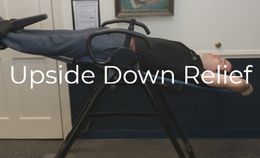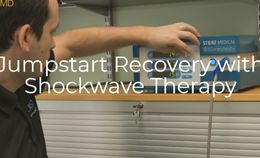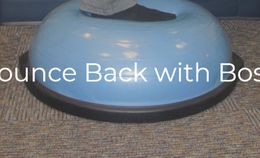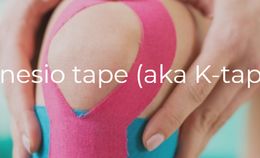Have you ever twisted your ankle? With around 2 million cases of ankle injury reported each year in the United States, it seems like everyone twists their ankle on occasion! For athletes, ankle sprains make up 20% of all reported injuries (1), and these are only the reported cases. But for most injuries, the question to follow is "What do I do? Ice it or apply heat? Should I not push it, maybe take off work?" Well, the answer to these questions can be found in M.I.C.E.
Most people have heard of the acronym R.I.C.E. when it comes to treating sprains and other injuries. However, the resting component of this regimen is counter-intuitive. One of the main problems with soft tissue injury is swelling, otherwise known as edema, where bodily tissues retain fluid following injury. The lymph system, which moves fluids from tissues, is reliant on muscle contractions in order to perform its task. See the flaw? If you are sedentary following an ankle sprain the fluid doesn't drain because the muscles aren't moving! As shown in a study by Kerkhoffs et al (2002), patients with functional movement treatments displayed shorter recovery times than those who were treated with immobilization. More often than not, it helps to keep moving!
As a result, we at QuistMD recommend Movement, Ice, Compression, and Elevation. All the steps of M.I.C.E. prove helpful when addressing ankle sprains, as well as joint and other soft tissue injuries. The steps are straightforward, and it is imperative that you ice an injury properly.
Treatment with ice, or cryotherapy, cuts down on edema by causing our blood vessels to constrict, limiting the amount of fluids which can fill the site of injury (2). Also, by lowering the temperature of the tissues, it reduces the metabolic demands of the cells, resulting in less waste products created (3). Icing is an effective method for treating all kinds of soft tissue injuries, and is the better alternative compared to treatment with heat. Why isn't heat better? Heat actually may increase swelling, and more swelling can make the injury worse.
But a common mistake is made when administering cryotherapy. It is important to NOT use chemical ice packs, and instead, fill an ice pack with real ice, then top it off with cold water. When taken from the freezer, the chemical ice packs are the same temperature as the freezer, allowing for the possibility of frostbite! Who wants frostbite on top of another injury? Additionally, chemical ice packs warm much faster than real ice. In other words, at the beginning of application the chemical ice pack is colder than ice, and by the end of treatment it is too warm to be of any benefit. For these reasons, it is best to use real ice for limited amounts of time, depending on how deep the tissues are. Dr. Haggquist recommends about 40 minutes of ice for knees and lower back, 30 minutes for ankles, and 10-15 minutes for more peripheral tissue injuries. The longer times are designed to allow the cold to reach the deeper tissue and make sure that the whole site of injury benefits from the treatment.
When performing therapeutic exercises, it is always helpful to have ice on hand. We at QuistMD administer cryotherapy in conjunction with therapeutic exercise, and though it might be cold, boy does the pain relief feel great! We would love to help you on the road to recovery by offering a comprehensive recovery plan for any musculoskeletal injuries you might encounter, so call us at (202) 244-8222 or email [email protected], and we'll help you get started!
1. Ivins, D. (2006). Ankle sprain: an update. Am Fam Physician, 74(10):1714-1720
2. Van den Bekerom, M. P., Struijs, P. A., Blankevoort, L., Welling, L., van Dijk, C. N., & Kerkhoffs, G. M. M. (2012). What is the evidence for rest, ice, compression, and elevation therapy in the treatment of ankle sprains in adults? Journal of Athletic Training, 47(4), 435–443.
3. Hubbard, T. J., & Denegar, C. R. (2004). Does cryotherapy improve outcomes with soft tissue injury? Journal of Athletic Training, 39(3), 278–279.
4. Kerkhoffs GMMJ, Rowe BH, Assendelft WJJ, Kelly KD, Struijs PAA, van Dijk CN. (2002). Immobilization and functional treatment for acute lateral ankle ligament injuries in adults. Cochrane Database of Systematic Reviews. Issue 3.
Authored by David Pitts, Jr.





















